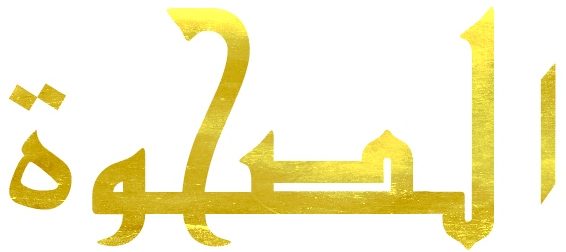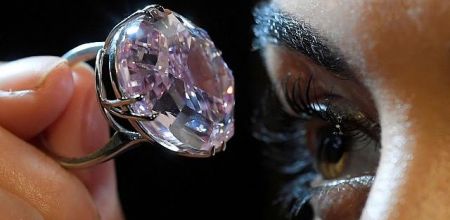Princie Diamond – $40m pink diamond bought at Christie’s by Qatari royals sparks legal battle
An Italian senator’s son was due to take Christie’s to court in New York City this week over the sale of one of the world’s most expensive diamonds, which he claims was stolen from his family.
Amedeo Angiolillo, who now lives in New York, argues that the auction house proceeded with the sale of the $40 million USD pink diamond despite him raising concerns about its provenance.
The Princie Diamond, as it is known, was purchased in good faith by a member of the Qatari royal family from the infamous highest Christie’s.
Christie’s, however, insists that the family members have no proof the diamond belongs to them and, furthermore, their client – who bought it from another family member – had every right to sell the stone.
The court case, which was scheduled for today, 6th November 2019, however, has been put on hold and the jury dismissed. It was not clear what the next step would be.
The story began 300 years ago, when the 34-carat pink diamond was first recorded, in India.
It came from the famed Golconda mines near Hyderabad, 400 miles east of Mumbai. The diamond was from a fine “family” – other celebrated Golconda stones include the Agra Diamond, the Hope Diamond at the Smithsonian, the Koh-i-Noor, which forms part of the UK’s Crown Jewels.
The diamond was first known as being part of the collection of the Nizam, or king, of Hyderabad.
It was passed down through the generations until the last Nizam, Mir Osman Ali Khan, decided to sell it in the late 1940s through Sotheby’s. It was bought by a Paris jeweller, and then sold on.
In 1960 a flamboyant Italian senator, Renato Angiolillo, purchased the diamond at Van Cleef & Arpels – the same year he married his second wife, Maria Girani Angiolillo,
It had been named “Princie” in honour of the 14-year-old Prince of Baroda, a former state of India, who came to a party that year at the Van Cleef & Arpels store in Paris, along with his mother.
Candida Morvillo an Italian investigative journalist who has been following the story of the diamond for years, said that Angiolillo’s son Amedeo told her that his father bought the diamond in Paris.
“My father bought the diamond in the ‘60s,” he reportedly said.
“He had lost a lot of money at the casino in Monte Carlo, about 700 or 800 million lire.
“My father wanted to prove that they are still rich and solid, so he bought that diamond.”
Angiolillo, founder of Italy’s Il Tempo newspaper, died in 1973, aged 72.
His glamorous widow, known as “the queen of the Rome salons” for her lively soirees of political debate, died in 2009.
When Amedeo Angiolillo went through his stepmother’s extensive art and jewellery collection, he was shocked to find the diamond missing.
Unbeknown to him, his stepbrother – Girani’s son from a previous relationship – Marco Milella had taken the stone.
As such the legal question is, whether the diamond was rightfully Mr Angiolillo’s or Mr Milella’s.
Under Italian law at the time, as court documents explain, all of the late senator’s possessions should have gone to his children, not his spouse, unless they were explicitly left to her.
His will said his wife should keep their home near Piazza di Spagna (the Spanish Steps in Rome) and its lavish furnishings. But nothing else was specifically mentioned.
So the lawsuit argues that the rest of the estate, including the diamond, belongs to his biological descendants – Mr Angiolillo and four grandchildren are the plaintiffs in this case.
But the auction house and its co-defendants said that the diamond, set in a ring, was a gift to Mr Milella’s mother, not a separate equity of the estate and so was owned by her when her husband died.
Even if the transfer of ownership between them was not official, the defendants argue, the way she kept control of the ring in the decades that followed his death made it legally hers.
In many countries such as the UK, when jewellery is given as a gift it is deemed to lawful property of the receiving party who is under no obligation to return the gift unless conditions are either explicitly expressed or heavily implied.
By 2013, the diamond was long gone. Mr Milella had sold it years earlier for nearly $20 million USD to a prominent gems dealer in Switzerland named David Gol.
Mr Gol, who has said he believes Mr Milella had clear title to the diamond, then worked with Christie’s to sell it as part of a jewellery auction in 2013.
“Prior to the 2013 auction of the diamond, the two main representatives of the family expressly withdrew any objection to the sale,” Christie’s said.
“Then two years after the successful sale they sued to claim inheritance rights to the proceeds without providing any significant new information to support a title claim.”
The auction house described the matter dismissively, as an “inheritance dispute among family members.”
There is no suggestion by any party that the new buyers in Qatar did anything wrong at all. The law suit does not name the Qatari buyers and only seeks to claim financial renumeration from Christie’s as part of an alleged inheritance dispute over the historic sale of the diamond.
Since you’re here …
… we have a small favour to ask. More people are reading Al-Sahawat Times than ever but advertising revenues across the global media industry are falling fast. And unlike many news organisations, we haven’t put up a total paywall. We want to keep our journalism as open as we can. So you can see why we need to ask for your help. Al-Sahawat Times’ independent, investigative journalism takes a lot of time, money and hard work to produce. But we do it because we believe truly ethical media and an unbias perspective really matters.
“I appreciate there not being a paywall: it is more democratic for the media to be available for all and not a commodity to be purchased by a few. I’m happy to make a contribution so others with less means still have access to information.”
If everyone who reads our reporting, who likes it, helps fund it, the future of ethical media and the futures of our staff and their families would be much more secure. For as little as £1, you can support Al-Sahawat Times and it only takes a minute. Thank you.
This story is available on:
Talk to a journalist
Email: NewsDesk@alsahawat.com
Web: alsahawat.com
Follow Al-Sahawat Times
⬆️ Follow on Instagram
⬆️ Follow on Twitter
⬆️ Follow on LinkedIn
⬆️ Follow on Facebook
⬆️ Follow on YouTube
Read it on FLIPBOARD
Views: 0






